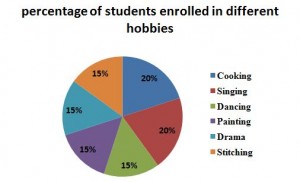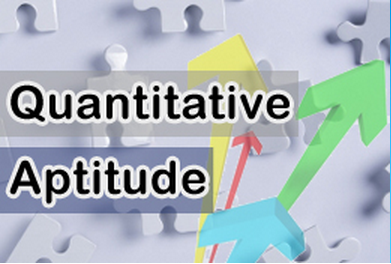Hello Aspirants. Welcome to Online Quantitative Aptitude section in AffairsCloud.com. Here we are creating question sample From Data Intrepretation that is important for all the competitive exams. We have included Some questions that are repeatedly asked in exams !!
Questions Penned by Yogit
Direction: Q(1- 5) Study the following graph and answer the following:–

Following graph shows the percentage of students who studied in private schools during 10th class

- In 2007 total number of candidates from different parts of the country was 1000, then how many non- private school students from TN passed the 10th board?
a) 125
b) 275
c) 250
d) 225
e) None of theseAnswer – d) 225
Explanation :
1000*(25/100)*(90/100) = 225 - In 2007 total number of students from private school from HP was 200, then many non-private school students are from Assam
a) 920
b) 940
c) 960
d) 980
e) None of theseAnswer – c) 960
Explanation :
Let total students from all region are P,
(10/100)*P*(25/100) = 200, we got P = 8000
Non- private students from Assam = 8000*(16/100)*(75/100) = 960 - If total passed students from J& K was 220, what is the ratio between the numbers of private students in TN to the number of non-private school students from Rajasthan?
a) 25: 302
b) 25:304
c) 25:308
d) 23:304
e) None of theseAnswer – b) 25:304
Explanation :
(11/100)*P = 220, P = 2000
Now ratio = 2000*(25/100)*(10/100) : 2000*(38/100)*(80/100) = 25 : 304 - If the number of private school students in Assam was 100, then how many candidates passed the examination from all parts from the country?
a) 2000
b) 2500
c) 3000
d) 4000
e) None of theseAnswer – b) 2500
Explanation :
(16/100)*P*(25/100) = 100, P = 2500 - If there is a increase of 10% and 20% students in Rajasthan and HP in the year 2008 respectively and the number of candidates passed from J&K in 2007 was 110, what would be the approximate number of students passed from Rajasthan and HP in the year 2008?
a) 438
b) 498
c) 538
d) 548
e) None of theseAnswer – c) 538
Explanation :
Let total number of students be P,
(11/100)*P = 110, P =1000
In 2007, Rajasthan = 1000*(38/100) = 380 and HP = 1000*(10/100) = 100
In 2008, Rajasthan = 380*(110/100) = 418 and HP = 100*(120/100) = 120
Total = 418 + 120 = 538
Direction: Q(6- 10) Study the following graph and answer the following:–

Total number of students = 6000
- The number of students enrolled in cooking are what percent of the number of students enrolled in Painting?
a) 123.33 %
b) 133.33 %
c) 143.33 %
d) 153.33 %
e) None of theseAnswer – b) 133.33 %
Explanation :
[6000*(20/100)]/[6000*(15/100)]*100 = 400/3 = 133.33% - What is the total number of students enrolled in stitching and singing classes?
a) 2100
b) 2400
c) 2700
d) 3300
e) None of theseAnswer – a) 2100
Explanation :
[(15 + 20)/100]*600 = 2100 - How many students are enrolled in painting classes?
a) 300
b) 450
c) 600
d) 900
e) None of theseAnswer – d) 900
Explanation :
(15/100)*6000 = 900 - What is the ratio between the number of students enrolled in dancing and stitching together to that of singing and painting together?
a) 5:7
b) 7:5
c) 6:7
d) 7:6
e) None of theseAnswer – c) 6:7
Explanation :
(30/100)*6000 : (35/100)*6000 = 6:7 - The number of students enrolled in painting is approximately what percent of that of singing and cooking together?
a) 32.5 %
b) 37.5 %
c) 42.5 %
d) 47.5 %
e) None of theseAnswer – b) 37.5 %
Explanation :
[(15/100)*6000]/[(40/100)*6000]*100 = 75/2 = 37.5%
Note: Dear Readers if you have any doubt in any chapter in Quants you can ask here. We will clear your doubts
AffairsCloud Recommends Oliveboard Mock Test
AffairsCloud Ebook - Support Us to Grow
Govt Jobs by Category
Bank Jobs Notification



